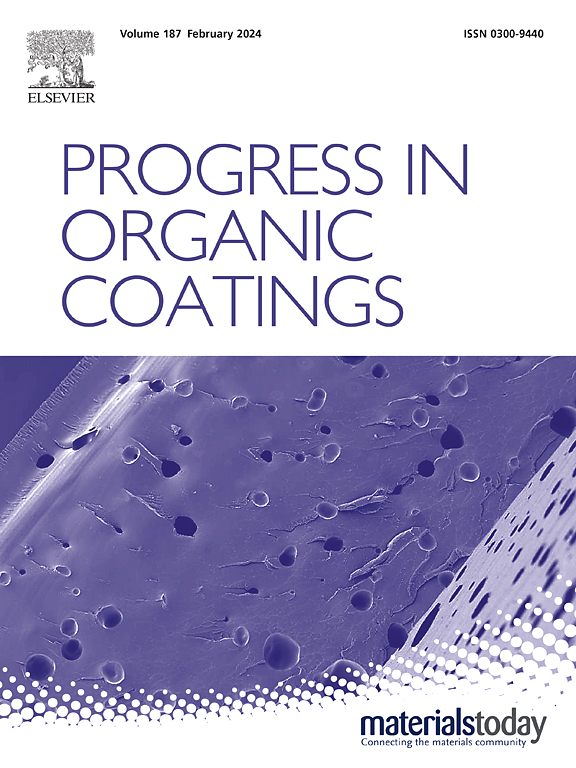Efficient production of ultrafine poly-p-phenylene benzobisoxazole nanofibres for high-performance polyurea nanocomposites
IF 6.5
2区 材料科学
Q1 CHEMISTRY, APPLIED
引用次数: 0
Abstract
The superb properties of poly-p-phenylene benzobisoxazole nanofibres (PNFs) have been realized in research institutes for advanced applications, such as military and aerospace industries. However, PNFs experiences major challenges in production and retaining their integrity after breaking into nanoscale. The current study succeeded to efficiently prepare reinforcing PNFs within considerably short time via ball-milling sol-gel disruption (BM-SGD) method. The BM-SGD method was able to produce ultrafine PNFs with diameters of 20 ± 5 nm at a concentration of 1 wt% in only 24 min; the method is ready for rapid and scalable production of PNFs. The intense collisions and shear forces during ball milling improve contact between fibres and reactants, accelerating the dissolution of fibres into a PNF sol. A wall-breaking step is used to disrupt PNF network to be integrated into polyurea matrix. The ultra-high specific surface area and surface functional groups of PNFs facilitate strong physical and chemical cross-linking with polyurea (PUA), leading to significant enhancement in its mechanical properties; tensile strength and Young's modulus of polyurea increased by 111.75 % and 106.10 %, respectively upon adding only 0.25 wt% PNFs. Additionally, the PUA/PNF nanocomposite demonstrates excellent corrosion resistance, as evidenced by the Tafel polarization test. The PUA/PNFs demonstrated high recyclability achieving 85 % recycling efficiency after the third cycle. This research pioneers a cost-effective strategy for the mass production of ultrafine PNFs, paving the way for advanced elastic and functional nanocomposites with broad industrial applications.

高性能聚脲纳米复合材料用超细聚对苯并苯并异恶唑纳米纤维的高效制备
聚苯并二苯并异恶唑纳米纤维的优异性能已在科研院所得到了广泛的应用,如军事和航空航天工业。然而,在进入纳米尺度后,pnf在生产和保持其完整性方面面临重大挑战。目前的研究成功地通过球磨溶胶-凝胶破坏(BM-SGD)方法在相当短的时间内有效地制备了增强pnf。BM-SGD方法在浓度为1wt %的条件下,仅需24min即可制备出直径为20±5nm的超细pnf;该方法可用于快速和可扩展的pnf生产。球磨过程中强烈的碰撞和剪切力改善了纤维与反应物之间的接触,加速了纤维在PNF溶胶中的溶解,采用破壁步骤破坏PNF网络,使其融入聚脲基体。PNFs的超高比表面积和表面官能团促进了与聚脲(PUA)的强物理和化学交联,从而显著提高了其力学性能;添加0.25 wt% PNFs后,聚脲的拉伸强度和杨氏模量分别提高了111.75%和106.10%。此外,PUA/PNF纳米复合材料具有优异的耐腐蚀性,这一点在Tafel极化测试中得到了证实。PUA/PNFs具有较高的可回收性,第三次循环后回收率达到85%。这项研究为大规模生产超细pnf开辟了一种具有成本效益的策略,为具有广泛工业应用的先进弹性和功能纳米复合材料铺平了道路。
本文章由计算机程序翻译,如有差异,请以英文原文为准。
求助全文
约1分钟内获得全文
求助全文
来源期刊

Progress in Organic Coatings
工程技术-材料科学:膜
CiteScore
11.40
自引率
15.20%
发文量
577
审稿时长
48 days
期刊介绍:
The aim of this international journal is to analyse and publicise the progress and current state of knowledge in the field of organic coatings and related materials. The Editors and the Editorial Board members will solicit both review and research papers from academic and industrial scientists who are actively engaged in research and development or, in the case of review papers, have extensive experience in the subject to be reviewed. Unsolicited manuscripts will be accepted if they meet the journal''s requirements. The journal publishes papers dealing with such subjects as:
• Chemical, physical and technological properties of organic coatings and related materials
• Problems and methods of preparation, manufacture and application of these materials
• Performance, testing and analysis.
 求助内容:
求助内容: 应助结果提醒方式:
应助结果提醒方式:


